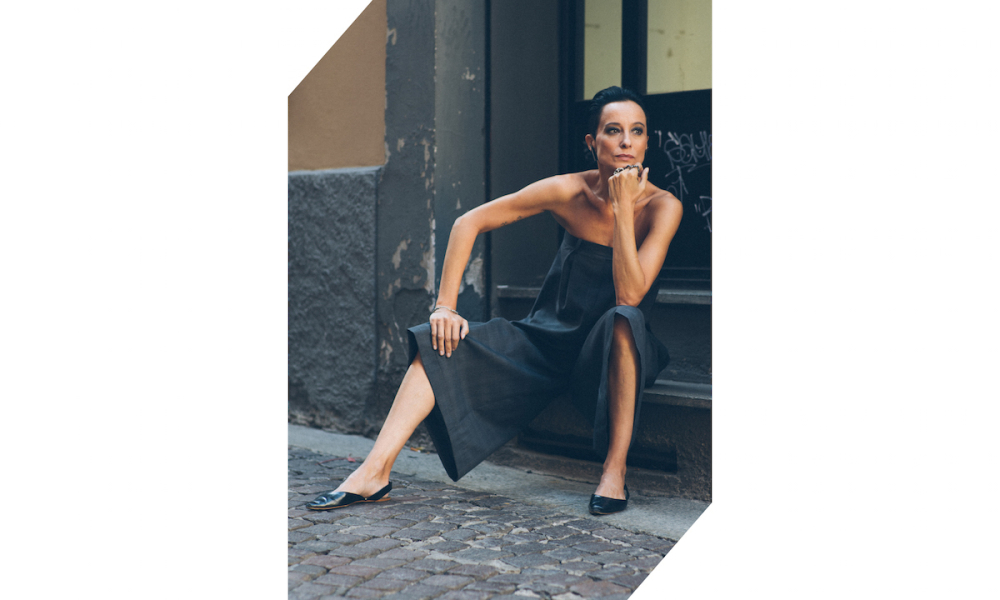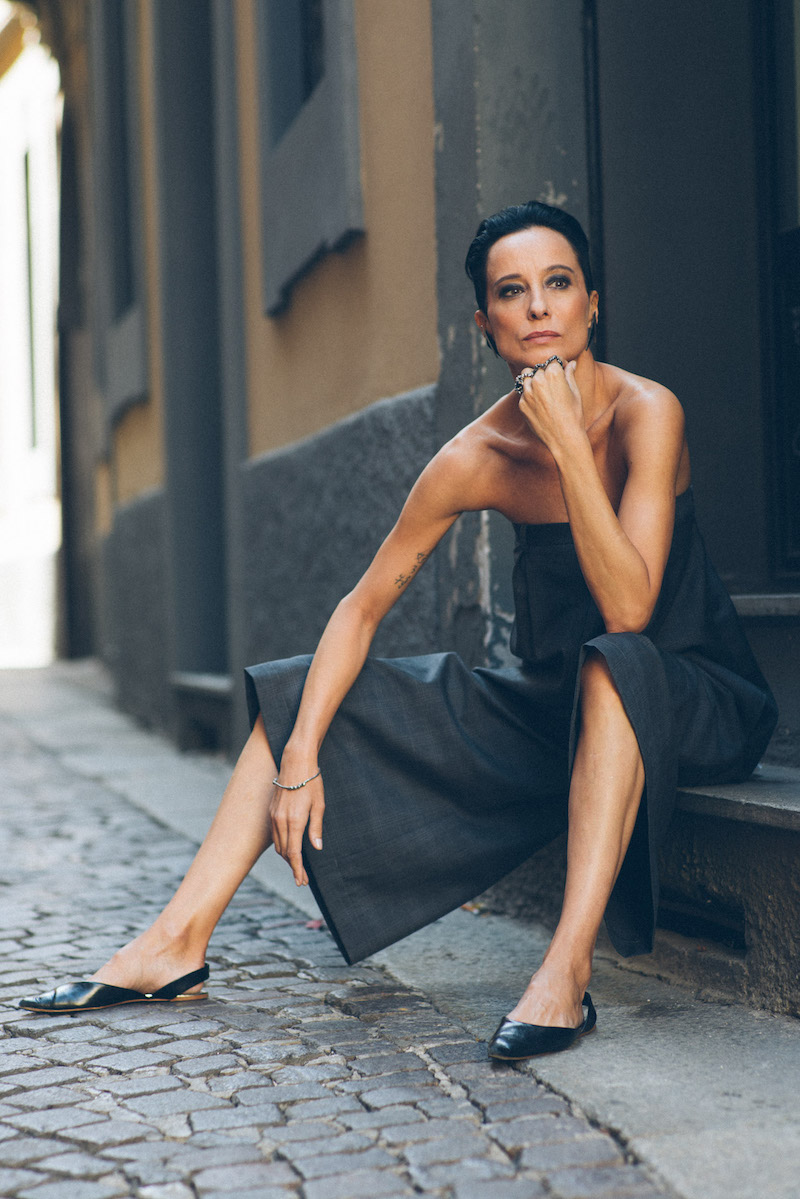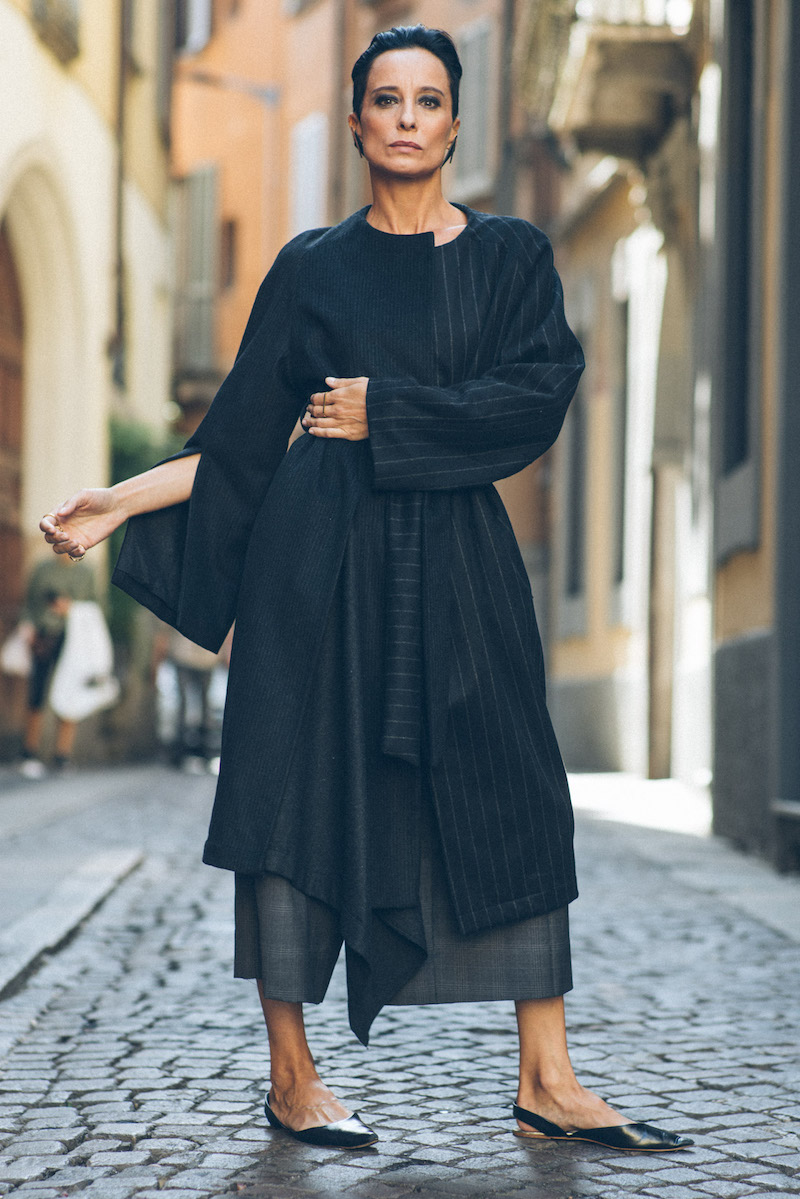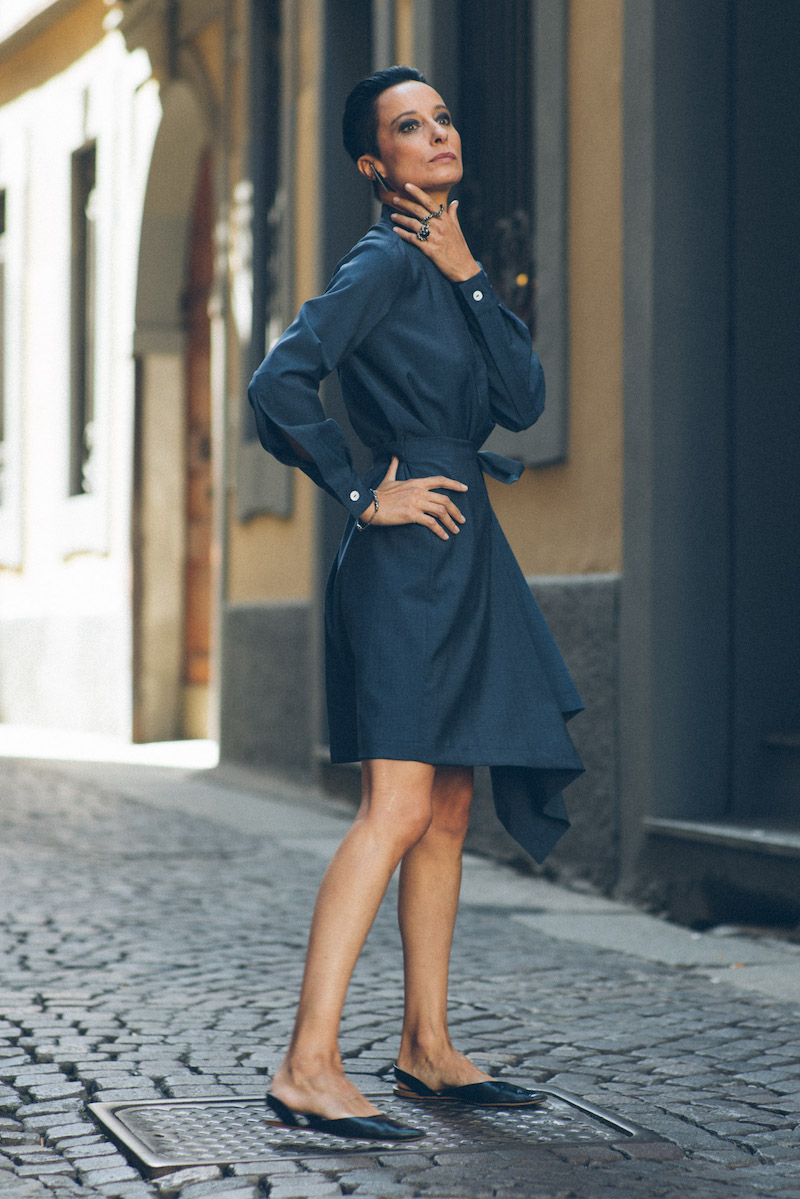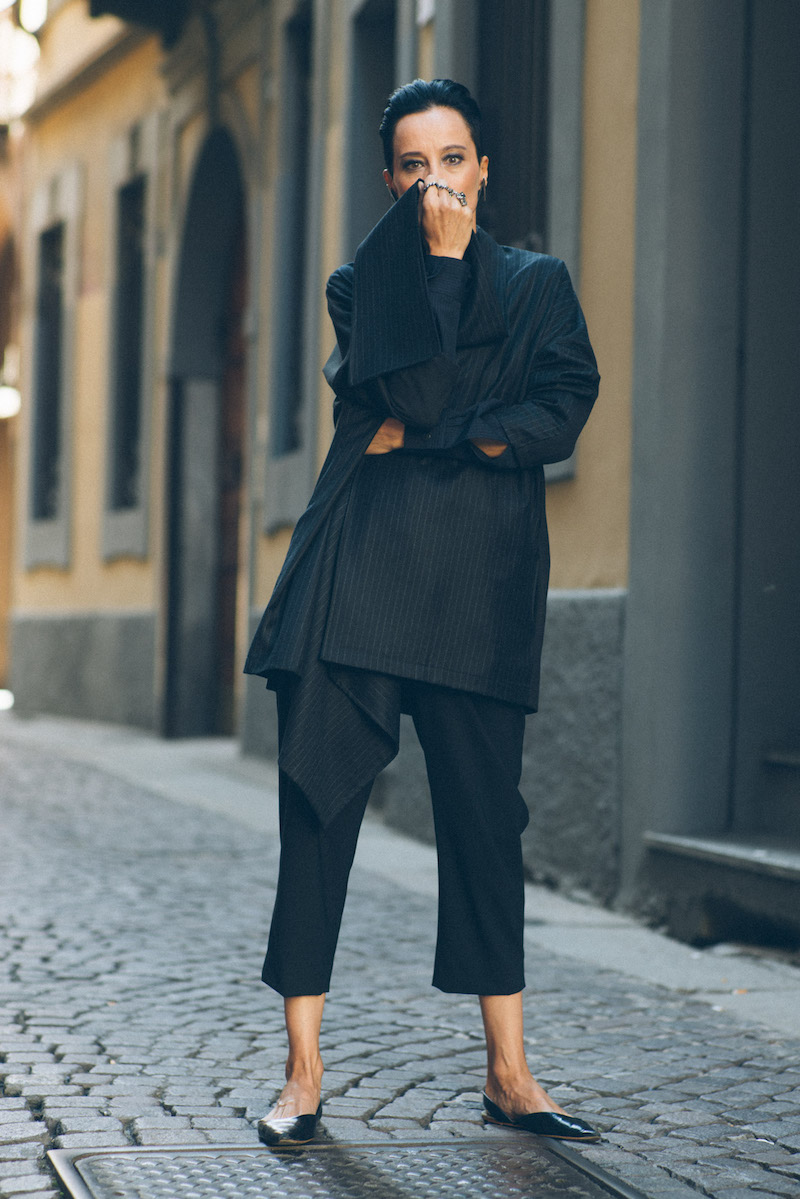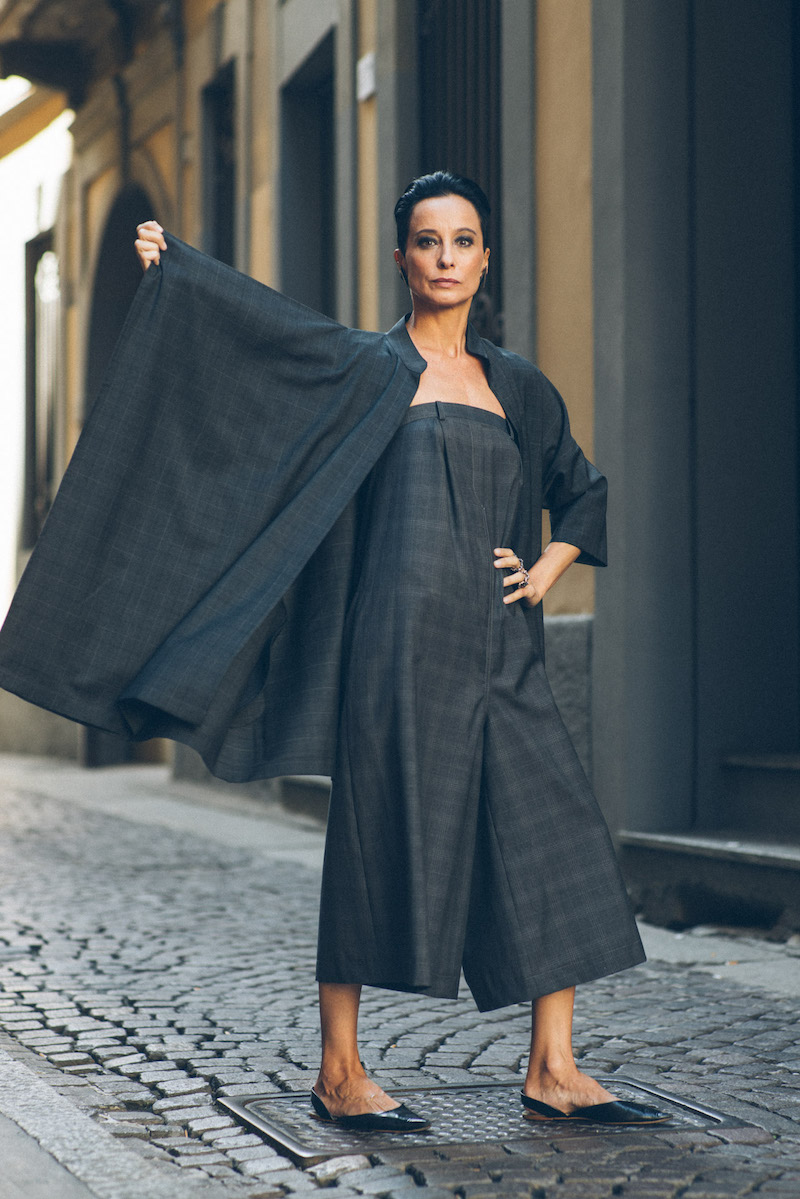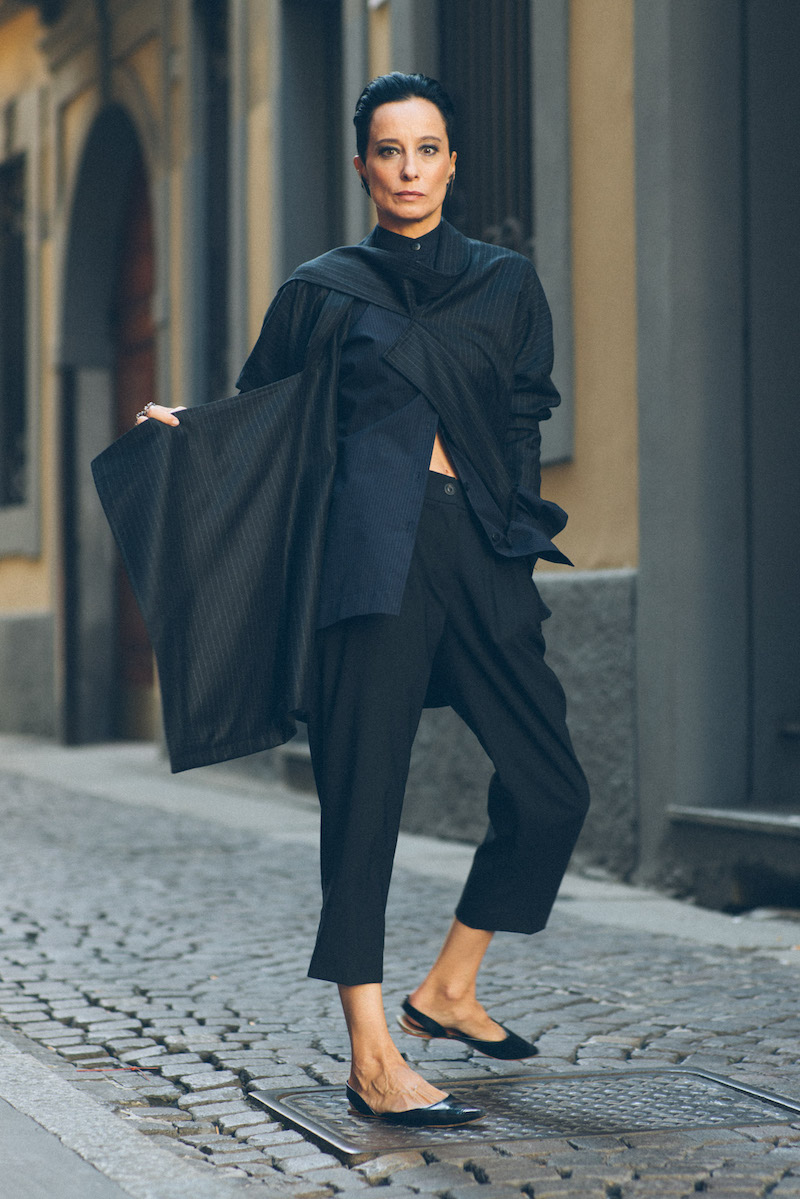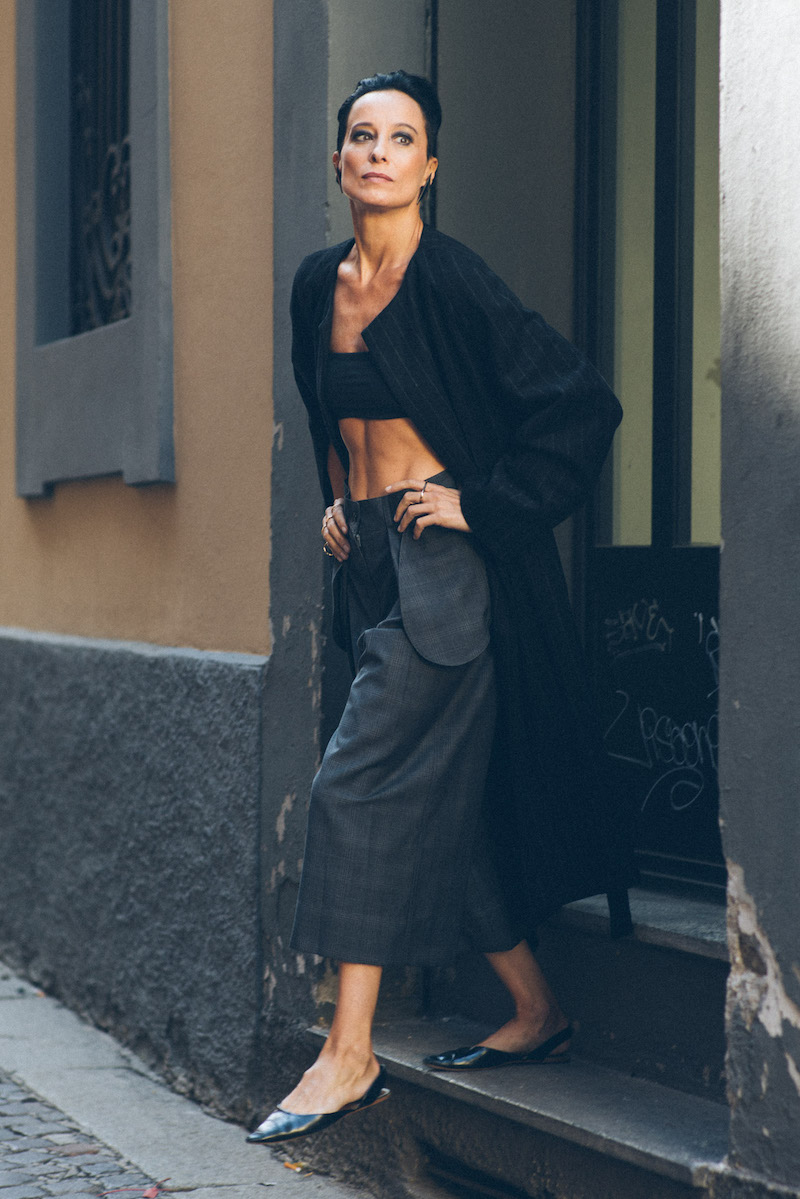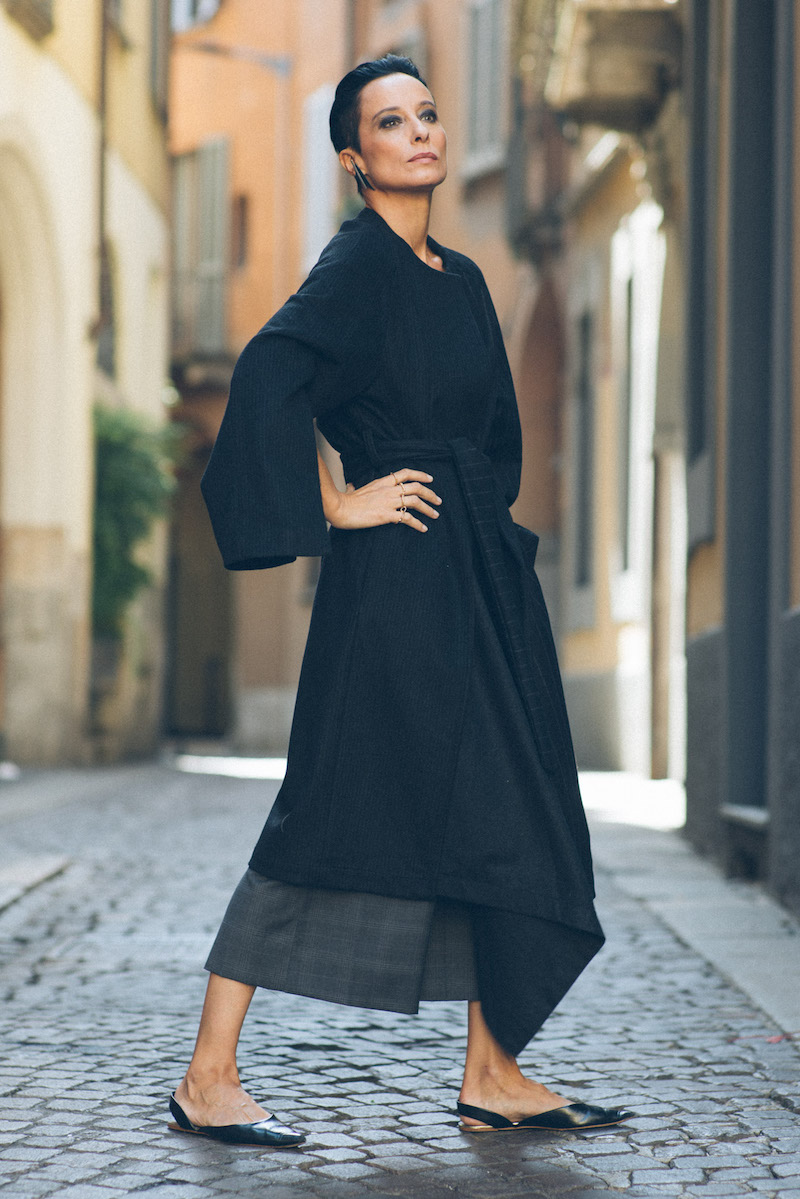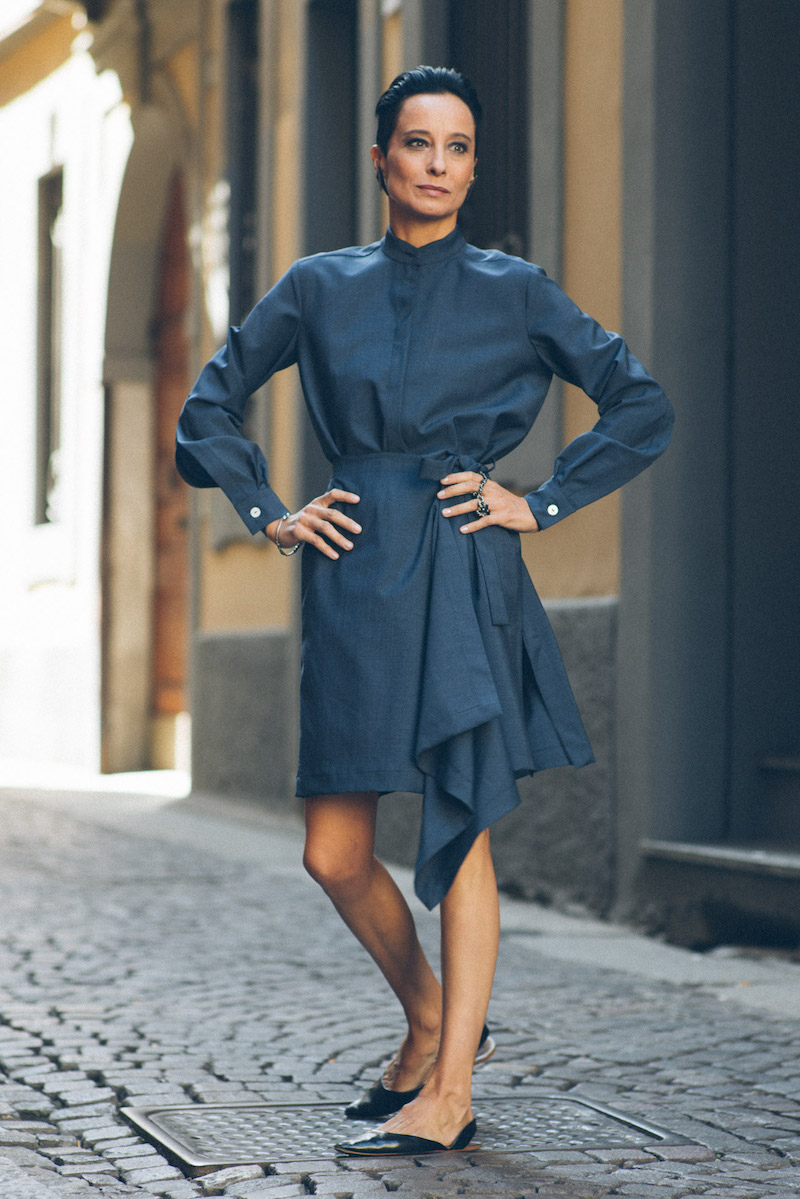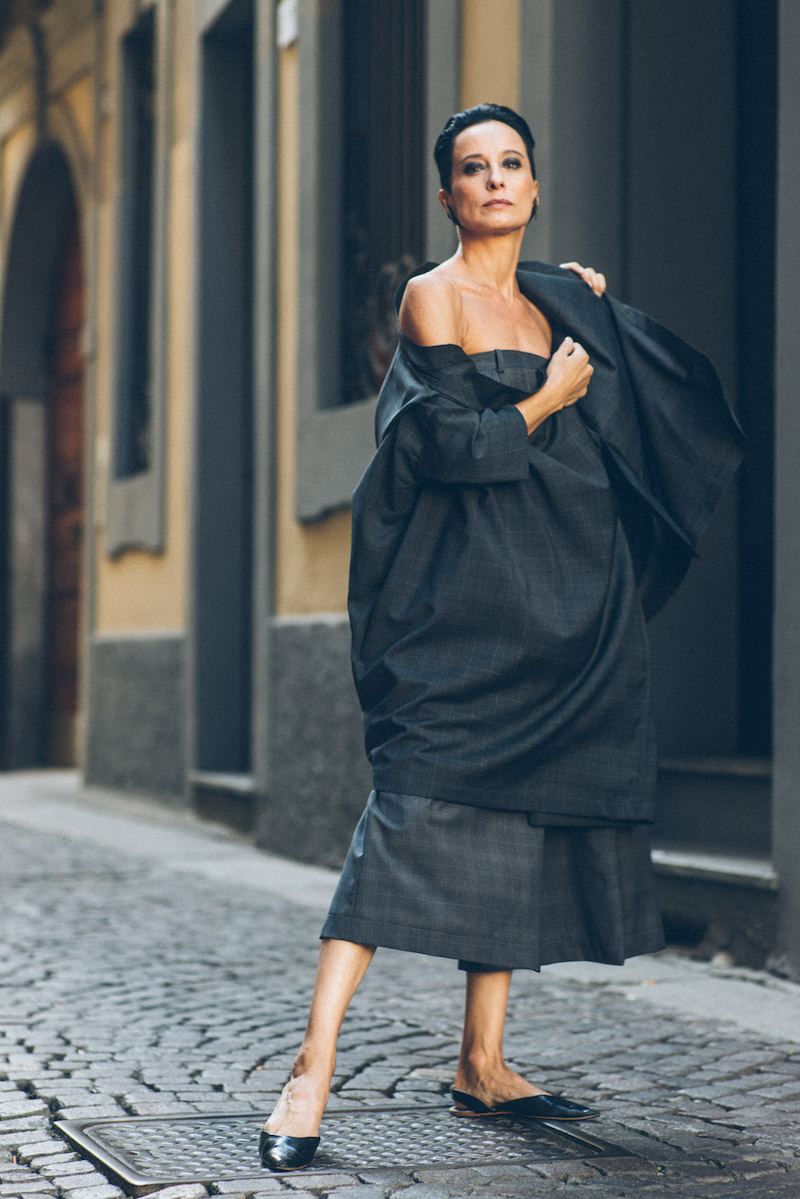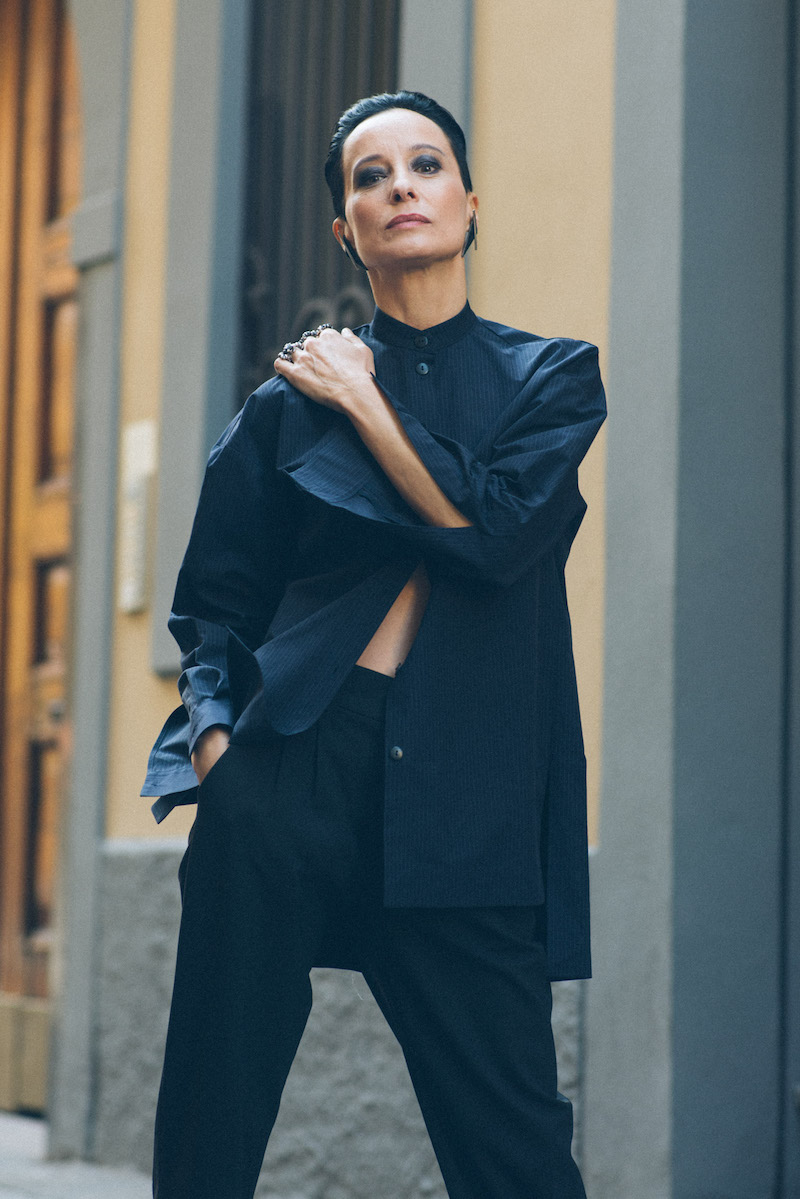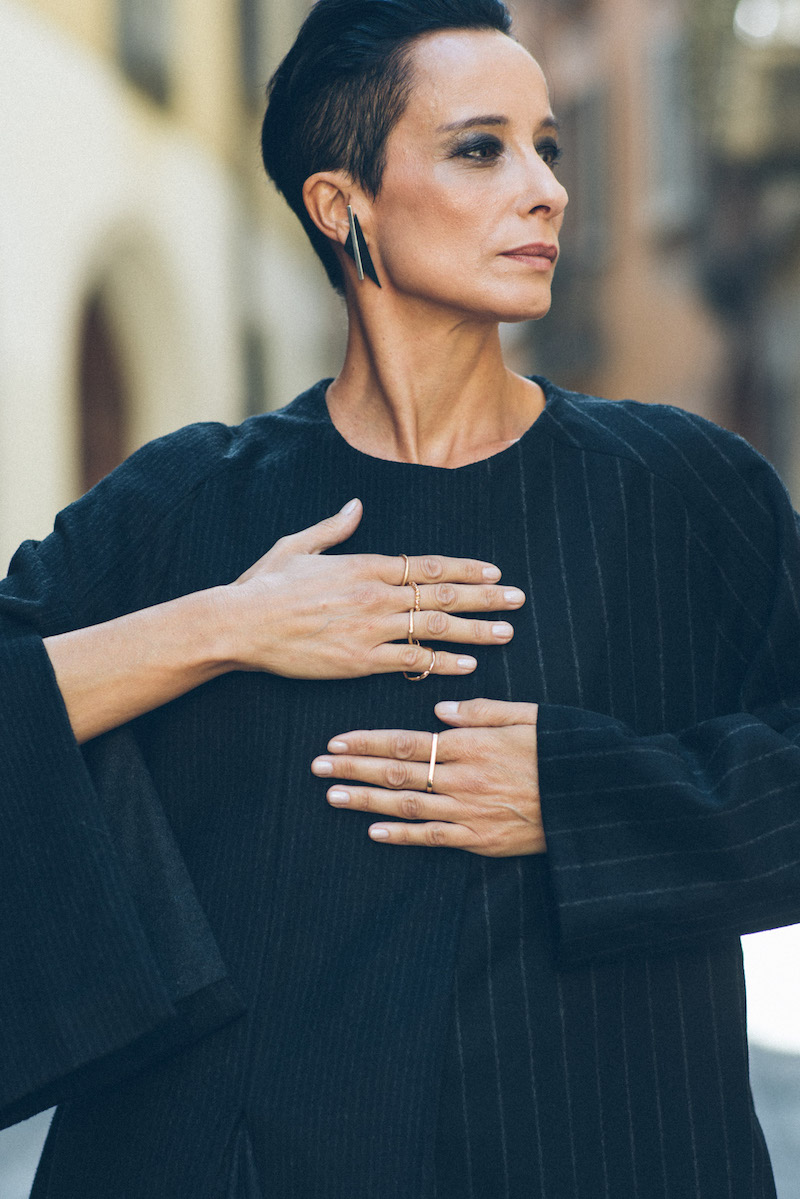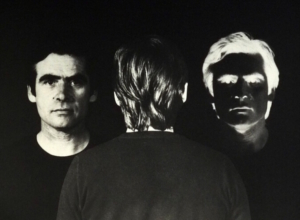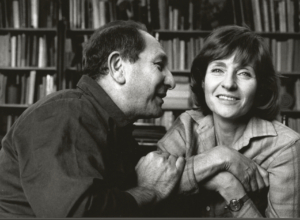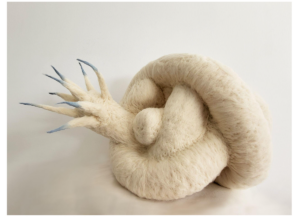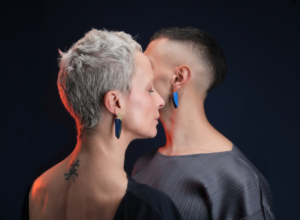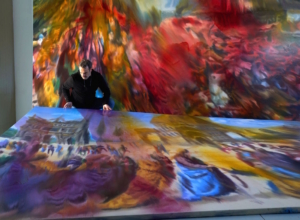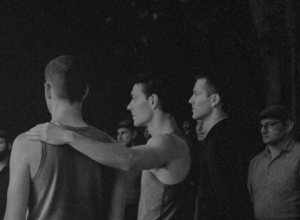Sepideh Ahadi ha un chiaro obiettivo estetico: la semplicità. Combinando le tecniche di lavorazione artigianali dell’Iran, la sua terra natale, con il pragmatismo tedesco (vive a Berlino) e l’eleganza italiana (ha studiato a Milano) ottiene come risultato capi minimalisti e innovativi: cappotti che si compongono di più strati o pantaloni dalla vita altissima, fino al petto, che si trasformano in una tuta. Un approccio a-temporale che non guarda alla stagionalità della moda e aderisce in maniera autentica ai principi del movimento slow fashion.
Sepideh Ahadi has a clear aesthetic goal: simplicity. But she is multi-layered with her craftsmanship techniques from her homeland, Iran, she combines with Berlin pragmatism and Italian elegance. The result is equally minimalist and innovative designs, such as coats that falls in multiple layers, or pants whose waistband is pulled up to the chest, so that they become a jumpsuit. She does not think in terms of seasons, but believes in slow fashion in the truest sense.
Francesca Interlenghi: Come è iniziata la tua avventura nella moda?
Sepideh Ahadi: Essere una designer non è mai stata una scelta per me, in realtà era l’unica cosa che sognavo di fare fin da quando ero una bambina, già all’età di dieci anni. Ero affascinata dai disegni di mia madre, bellissimi corpi di donna, e così ho iniziato a disegnare anche io provando a immaginare per quelle donne i vestiti e capendo che diventare una designer era l’unica cosa che veramente volevo. A tredici anni poi ho iniziato a creare abiti per un negozio di abbigliamento del quartiere in cui vivevo ricevendo in cambio un capo campione. È così che è cominciato tutto. A volte ho la sensazione che sia stata la moda a scegliermi, io ne ero solo profondamente innamorata.
Francesca Interlenghi: How did you come to fashion?
Sepideh Ahadi: Being a fashion designer for me was not never be a choice, ever since I was a young kid being a fashion designer was the only thing I dreamed about. At the age of ten, I was fascinated by women’s bodies drawn by my mom. So I started drawing women figures. Afterward the idea of making clothes for them and becoming a fashion designer crossed my mind. At the age of 13, I commenced to design dresses for a local clothing shop in our neighborhood and in return, I received samples of my own designs. That’s how I became a fashion designer. Sometimes I have this feeling that fashion chose me and I was just the one who deeply was in love with one thing.
Francesca: Che tipo di formazione hai avuto nel campo della moda e cosa ti ha spinto a fondare il tuo marchio?
Sepideh: Non ho mai considerato la moda come un lavoro o un dovere perciò passare il tempo facendo qualcosa che nutrisse la mia anima e la mia stessa vita è stata la ragione che mi ha spinto a fondare il mio brand. Mentre studiavo fashion design all’Università di Teheran, ho iniziato a produrre i miei capi e organizzare eventi privati nella mia città. Avere successo in quel momento era più facile proprio perché mancavano designer che avessero un approccio nuovo alla moda. Ma mentre studiavo e lavoravo in Iran, ho avvertito la necessità di proseguire la mia formazione in un altro Paese. L’Italia era la mia unica opzione, dato che sono sempre stata un grande fan della sua cultura e della sua moda, quindi ho fatto domanda per l’Università del Politecnico di Milano. Lì ho imparato cosa vuol dire essere una designer, ho imparato a pensare come una designer e a comportami come una designer. Ero venuta in Italia con l’idea di fare vestiti e invece al Politecnico mi sono ritrovata a seguire corsi di branding, marketing, comunicazione e allestimento vetrine. All’inizio è stato uno shock, ma ora penso che frequentare quell’università sia stata una delle cose migliori che mi potessero capitare. Grazie al livello avanzato di studi ho appreso molto sul concetto di moda sostenibile, tant’è che per la mia tesi di laurea ho condotto ricerche sulla sostenibilità nella moda decidendo poi di trasferirmi a Berlino, convinta che avrei avuto lì più possibilità come designer di moda sostenibile.
Francesca: What training did you have in fashion and why did you decide to establish your brand?
Sepideh: Fashion for me never was a job or duty, so spending time on something uplifting my soul and helping me to be myself was the reason to establish my brand. While I was a student of fashion design in university I started to produce my own designs and organize private fashion events in Tehran. When I graduated from university in Iran, it was easy for me as a designer to take the market by storm due to the severe lack of designers in Iran at that time with a new approach to fashion. While I was working and studying in my hometown I noticed that for becoming a real fashion designer I needed to go to another country in order to continue my studies. Italy was my only option as I was a big fan of Italian culture and fashion so I applied for the University of Politecnico di Milano. In our university more than anything mainly I learned about how to become a designer and how to think and act like a designer. I came to Italy to make clothes but instead in Politecnico, unfortunately, we did not have many fashion design courses but branding, marketing, communication, and window display design were mostly taught. At the beginning of my study, it was a big shock for me but now since I started my own label I noticed how important was the topics which they thought us in the university and I believe that studying at Politecnico was one of the best decisions I made. Because of the advanced level of our studies in Politecnico I’ve got familiar with the concept of sustainable fashion. For my master thesis, I did my research on sustainability in fashion and while I was doing my research I noticed that Berlin is the next destination for me to go. So I changed my country again right after my graduation in Italy and went somewhere where I had more possibilities as a sustainable designer.
Francesca: Come descriveresti il tuo approccio alla moda?
Sepideh: Quello che faccio nella moda è ciò che comunemente viene definito slow fashion o moda sostenibile. Ho messo insieme tutte le cose buone che ho imparato in Iran, in Italia e Germania e il risultato è davvero sorprendente. Il design della moda in Iran, a causa dei limiti e delle sanzioni a cui è sottoposta l’industria del fashion, è ancora molto lento e quindi, senza nemmeno accorgercene, abbiamo già un sistema di moda sostenibile nel senso che non esistono le grandi catene come H&M e Zara. I designer producono i loro abiti in piccole quantità e solo in base agli ordini per cui l’ “unicità” è un fattore chiave della moda in Iran. L’ Italia, che è rinomata per la sua tradizione e la sua storia della moda, mi ha insegnato invece l’importanza della qualità. La Germania, per lo stile di vita dei suoi abitanti improntato alla praticità, mi ha insegnato l’importanza della funzionalità del vestire. Quindi il mio lavoro è un mix di “Unicità”, “Qualità” e “Funzionalità”.
Francesca: How would you describe your approach to fashion?
Sepideh: What I do in fashion is called “slow “or “sustainable fashion”. I mixed all the good things I learned in Iran, Italy, and Germany together and the result is amazing. Because of limitations and sanctions Fashion design goes slowly or smoothly in Iran, we do not have big Fast fashion brands like H&M or Zara. Therefore, unconsciously sustainable fashion design found its way in Iran’s market. Designers produce their clothes in a small amount based on customers’ needs and “uniqueness” plays an important role in fashion in my hometown. In Italy, Due to great reputation and history in fashion “quality” and “design” are very important for designers and customers. In Germany “Practicality” plays an important role in the industry because of people’s lifestyles. So my work is a mix of “Uniqueness”, “Quality” and “Practicality”.
Francesca: Come si sviluppa il tuo processo creativo? Cosa ti ispira di più?
Sepideh: Attraverso le mie collezioni voglio raccontare delle storie nelle quali le mie esperienze giocano un ruolo da protagonista. Racconto con i miei abiti della vita di mia nonna o della mia storia di immigrata in due diversi Paesi; parlo persino dello zafferano, la spezia più utilizzata nella cucina iraniana, o della vita dei Dervisci e dei Sufi. Mi ispiro a queste storie e modello le collezioni basandomi su di esse. Vi aggiungo la mia interpretazione, il sale e il pepe per così dire, e il risultato è qualcosa che la maggior parte delle persone sta apprezzando. Nella moda è molto comune che i designer utilizzino spesso delle mood board o delle immagini d’ispirazione, io invece no: tutto è nella mia mente e io solo gli do vita con tessuto, ago e filo .
Francesca: Can you tell me more about your process of working? What inspires you the most?
Sepideh: With my designs I want to tell a story, I want people to read my stories, I want to tell them stories while they are looking at my collections. In the stories, my personal life experiences are the protagonists. These experiences are so different but for example, they are about my grandmother’s life, my own Immigration to two different countries, saffron as an Iranian most famous spice or the life of Iranian Dervishes and Sufis. I shape the collection based on these stories and my interpretation, I eventually add salt and pepper to them so they become enjoyable and exciting. In fashion, it is very common that designers often have some mood boards or image inspiration board, but I do not have any of these boards, everything is in my mind and what I do is bring them to life with fabric, needle, and threads.
Francesca: Qual è la donna che indossa le tue creazioni?
Sepideh: Sono una sognatrice perciò nei miei sogni le donne che indossano i miei abiti sono molto sicure, donne che sanno chi sono, che conoscono la loro forza e la loro debolezza e non si vergognano di loro stesse. Donne che si sentono uniche e sono consapevoli di essere speciali pur senza avere bisogno di urlarlo. Sono forti ma anche fragili e dolci. I tessuti che scelgo per i miei abiti sono quelli che vengono normalmente utilizzati per le collezioni maschili, mentre le forme sono molto sofisticate e innovative. I tagli asimmetrici esaltano la molteplicità dei nostri ruoli e delle nostre vite, si può giocare con la forma dei miei capi e possono essere indossati in vari modi. Questo da un senso di libertà e rende il mio prodotto attrattivo per quelle donne che amano le sfide e non si accontentano di qualcosa di superficiale.
Francesca: Which type of woman wears your clothes?
Sepideh: I’m a dreamer, in my dreams, the women wearing my clothes are very confident, they know who they are, they are wisely aware of their inner strengths and weaknesses. They never feel ashamed of themselves. The women who feel unique and special. They do not need to shout it out, though. These women are strong, but on the other hand, they are fragile and tender. The fabrics I mostly choose for my clothes are from men’s collections, and I use very sophisticated and innovative forms for the designs. Most of my clothes are asymmetric to show the inequality of our characters and our lives, they are playful in the forms and you can wear them in many different ways. You feel free when you are wearing them and these characters in my designs seem interesting for women who embrace challenges and not feeling satisfied with superficialities.
Francesca: Come si sta sviluppando il marchio?
Sepideh: Quando mi sono trasferita in Germania per lavorare al mio progetto di moda non sapevo da dove iniziare, dove acquistare i tessuti, come fare a vendere i miei capi, non conoscevo nessuno, tanto meno la lingua e la cultura per cui ho dovuto imparare tutto sul campo facendo anche degli errori, ma forse proprio da quelli ho imparato di più. Non è stato facile all’inizio ma avevo un sogno e sono andata avanti presentandomi a tutti gli eventi legati alla moda, incontrando persone, raccontando la mia storia e chiedendo consigli finché tutti questi tentativi sono stati ripagati all’inizio del 2019 quando sono stata selezionata come uno dei dieci designer dell’anno nell’ambito della moda sostenibile in Germania. Da lì le cose sono migliorate. Ora finalmente ho la sensazione di sapere dove voglio andare e come raggiungere i miei obiettivi. Tante persone mi hanno aiutata durante questo mio percorso, hanno creduto in me e mi hanno incoraggiata a continuare la mia strada.
Francesca: How is the brand developing?
Sepideh: When I wanted to take up my career in Germany, I did not know how to start, where to buy threads, fabrics and how to sell them, I didn’t even know one person in the fashion industry when I moved to Berlin, without knowing the language and culture, I started to work on my designs, I had to learn everything from scratch so making mistakes was inevitable. I have learned a lot from my mistakes, though. In the beginning nothing was easily achievable, but I had a dream. So I kept working, attending every event related to fashion and meeting people, telling my stories and asking them for some advice. All my attempts paid off when I was selected as one of the ten designers of the year working on sustainable fashion in Germany at the beginning of 2019. From then on, things got better. I finally felt that where I am willing to go and how I have to reach my goals. I have to say that so many people helped me during my journey, the people who trusted me and encouraged me to keep going.
Francesca: Progetti per il prossimo futuro?
Sepideh: Sto lavorando alla nuova collezione per il prossimo inverno e sto anche presentando capi di moda sostenibile per la clientela iraniana attraverso il gruppo “Fashion Revolution”.
Francesca: Do you have any upcoming projects?
Sepideh: I am working on my new collection for next winter and also introducing sustainable fashion to the Iranian audience with the group of “Fashion Revolution”.
Sepideh Ahadi – web site – Facebook – Instagram
Photos Elisabetta Brian
Mua Gaetano Blasa using Laura Mercier


